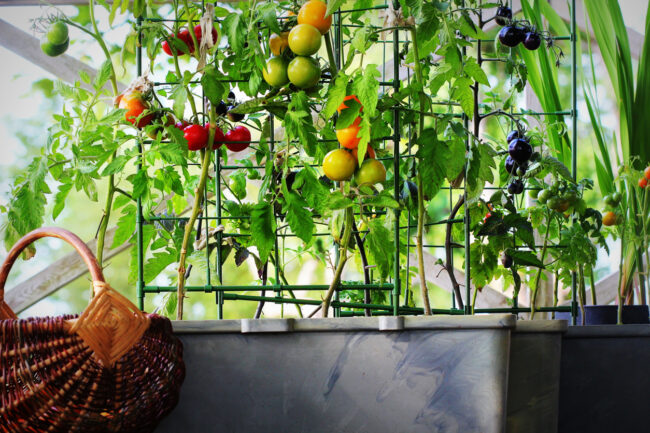Margaret Murphy
Horticulture Educator for Chippewa, Dunn, & Eau Claire Counties
UW-Madison Extension
Growing up, I remember we always had a very large vegetable garden in the backyard. Mom was a marvel in the garden. I don’t remember a time when we didn’t have fresh vegetables to eat throughout the summer.
Over the years, the popularity of growing one’s own food has waxed and waned, but in recent times, the trend is once again to have edibles in the home landscape. However, not everyone has the room or time (or mobility) to keep a large garden. Small gardens are easier to manage and keeping your garden size small doesn’t mean you have to forfeit a bountiful harvest.
There are several techniques that can help gardeners get maximum productivity from a small space. The first is to interplant. With this technique you can grow two or more vegetables in one area by planting slow maturing (long season) and fast maturing (short season) crops. The fast-maturing vegetables are harvested first leaving space available for the slower crop to mature. An example of this is planting radish, a fast-maturing crop with carrots, a slow-maturing crop. Another method is to alternate rows of fast and slow maturing vegetables such as planting leaf lettuce between two rows of tomatoes. When interplanting crops, remember to take into consideration the growing needs such as soil moisture of each of the crops planted together.
Similar to interplanting is the technique of companion planting. There is limited scientific research on companion planting. Information heralding the benefits of this technique is often anecdotal, but the practice dates back centuries and has been employed in gardens all over the world. It involves growing two or more crops together that benefit or complement each other. For example, tomato and basil are considered good companions in the garden as basil may benefit tomato growth. Another idea is to plant squash and other insect pollinated crops next to flowers that support pollinators to help improve pollination.
Succession planting is another technique to consider. As soon as one crop is finished plant another in the same plot or container. For example, after the early, cool season crops such as radishes and peas are harvested, replant the space with beans, beets or cucumbers. After you are done harvesting the cucumbers in late summer, you could plant another round of radishes for a fall crop.
Succession planting is also used to describe staggered plantings of the same crop (sometimes referred to as relay planting). For example, you can make successive plantings of beets every two to three weeks until midsummer for a continued harvest.

Then there is the practice of growing food vertically using trellises, cages, stakes or hanging baskets. This is an increasingly popular concept and truly does offer a way to grow food even with very limited space. Many vegetables and fruits grow very well vertically including pole beans, peas, cucumbers, squash, melons, tomatoes, and strawberries. Buy small-fruited varieties for crops such as melons, cucumbers, and squash. An added bonus of growing your food vertically is it can make harvesting much easier.
Lastly, if you lack land to cultivate don’t despair. Many vegetables grow just fine in containers. All you need is a pot that provides good drainage and a sunny place to locate your vegetable garden. Most vegetables require a container that holds six to eight inches of potting soil though crops like tomatoes and other larger-sized plants will need deeper soil. Leaf lettuce, kale, chards, beets, cabbage, peppers, tomatoes, radishes, and cucumbers are just a few types of vegetables that I have grown in containers.
For more information on growing vegetables in containers and for a list of vegetables well-suited for containers, view the UW Madison Division of Extension Fact Sheets:
- Growing Vegetables in Containers at https://hort.extension.wisc.edu/articles/growing-vegetables-containers/
- Vegetable Varieties for Containers at https://hort.extension.wisc.edu/articles/vegetable-varieties-for-containers/.
Happy Gardening!
Sources:
Small Plot Vegetable Gardening, Iowa State University Extension and Outreach, https://store.extension.iastate.edu/product/4177
Maximizing Your Vegetable Garden, PennState Extension, https://extension.psu.edu/maximizing-your-vegetable-garden. Companion planting in home gardens, University of Minnesota Extension, https://extensyension.umn.edu/planting-and-growing-guides/companion-planting-home-gardens





